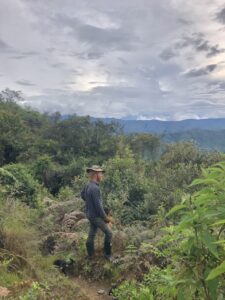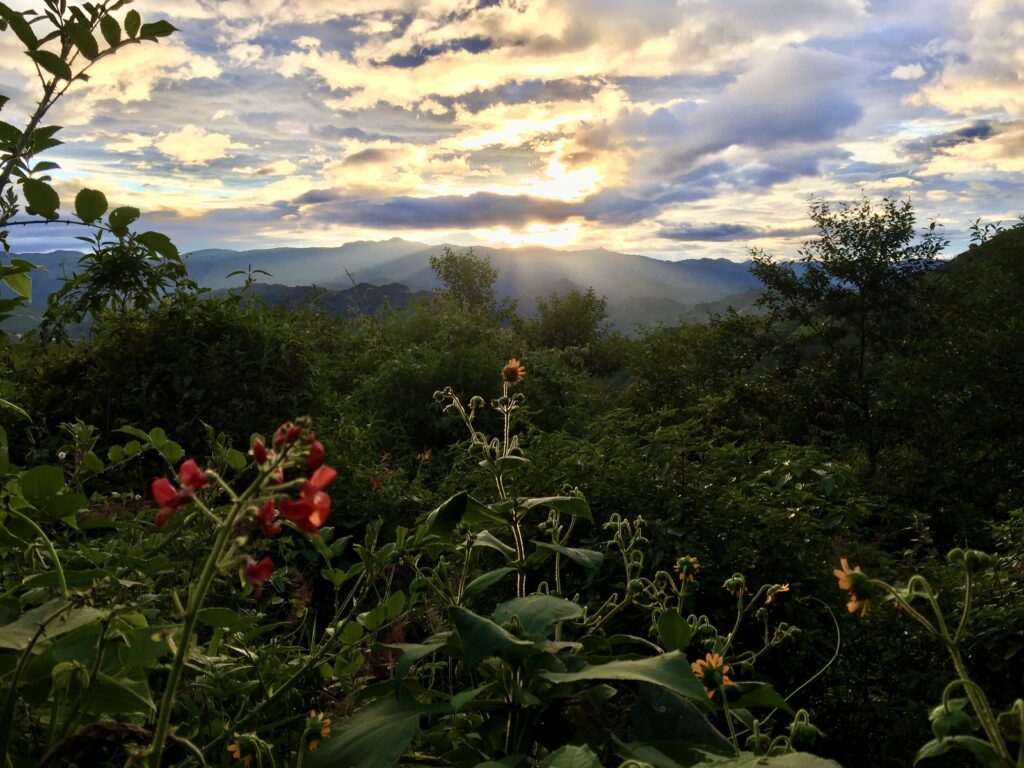Yves shares how he creates designs for forest gardens in this excerpt from his Conservation Corner interview in the Winter edition of Botanical Anthology. This herbal magazine, featuring remedies, recipes and projects with plants for the winter season, can be purchased as a digital version here and as a printed version here.
0. Before ever considering your design, begin a practice of observation, and keep this practice throughout your relationship with the landscape.
Go out and get to know the wild plants and animals that are already there. Pay attention to the elements: how the wind blows, where the sun shines and the rain collects, and so on. Keep a journal or calendar, and look for relationships and patterns. Nature offers inspiration and guidance, once you consciously observe.
1. Select the plants for food, medicine, soil building, beauty, etc.
Good places to find what you might want to select from are local nurseries, the wild plants that you observe growing in your area, and the gardens and landscapes of nearby neighborhoods. You can start with lists, under the headings of what uses they offer you and the ecosystem.
2. Know the requirements of the plants that you wish to integrate.
Find out what kind of soil they prefer, how much water and sunlight they require, and so on. Those nurseries, local growers, the internet, and extension services offer a lot of information. You could compile a spreadsheet, putting uses, requirements, and other features like size and shape, in columns. This can help you later in the design stages.
3. Know what different parts of the landscape have to offer, and how to modify those conditions to suit any special requirements.
The more conditions that your landscape offers, the more diversity you can plant out. You can make mounds to generate dryer areas, and small ditches or even ponds to make wetter zones. Some areas you may want to fertilize for more needy plants, while others might not get amended and be fine for natives..
4. Plan accordingly, and leave space for nature to throw in wild plants for increased biodiversity, soil health, and beauty.
Draw a (more or less) scale map of the landscape. You can chat by taking a screenshot of a satellite image of the landscape, and using an editor to whiten the picture so it’s easier to write on. Either in an editor, or on printed sheets, you could lightly draw in features of the landscape and elements. Finally, you can start placing plants like a complicated jigsaw puzzle. Try several different combinations, until you find something that fits well.
5. Remember that your design will evolve as you and the landscape do.
Some plants will die, some wild ones will unexpectedly sprout where you had other plans, and new plants and information will come to you through the years. Stay patient, observe your landscape with the same wonder and appreciation that we observe our children, and I’m sure you and your landscape will benefit.

Yves has lived off-road and off-grid, as a steward of Sacred Sueños Eco Sanctuary for nearly 20 years. He teaches and consults about ecology-inspired landscaping, helping small property owners re-wild their yards in a way that provides food, medicine, and other resources. Find out more about working with Yves here.

